Key Points:
- The Black River-Ouachita River spans 510 miles through Arkansas and Louisiana.
- Some common wildlife include white-tailed deer, American alligators, and largemouth bass.
- The Black River gets its name from the dark hue of its water.
Tall green trees and other plant life decorate the Arkansas and Louisiana landscapes. As rivers and other bodies of water weave through mountains and forests, holding back the desire to jump in and immerse yourself in your surroundings feels impossible. The Black River-Ouachita River connects these two lush states, flowing into Lake Ouachita. Once used for navigation, the river is part of a network of other tributaries that create the beauty of these southern states.
Before you dive into the tea-colored river, you need to know what’s waiting for you. Let’s discuss the Black River-Ouachita River’s many features to see if it’s safe for a swim.
Fun Facts About the Black River-Ouachita River
- Total Length: 510 miles
- States that it connects: Arkansas and Louisiana
- Local habitat: Deep woods, including wetlands.
- Cities along the river: Hot Springs (AR), Malvern (AR), Arkadelphia (AR), Camden (AR), Sterlington (LA), Monroe (LA), West Monroe (LA), Columbia (LA), Harrisonburg (LA), and Jonesville (LA)
Where is the Black River-Ouachita River Located?
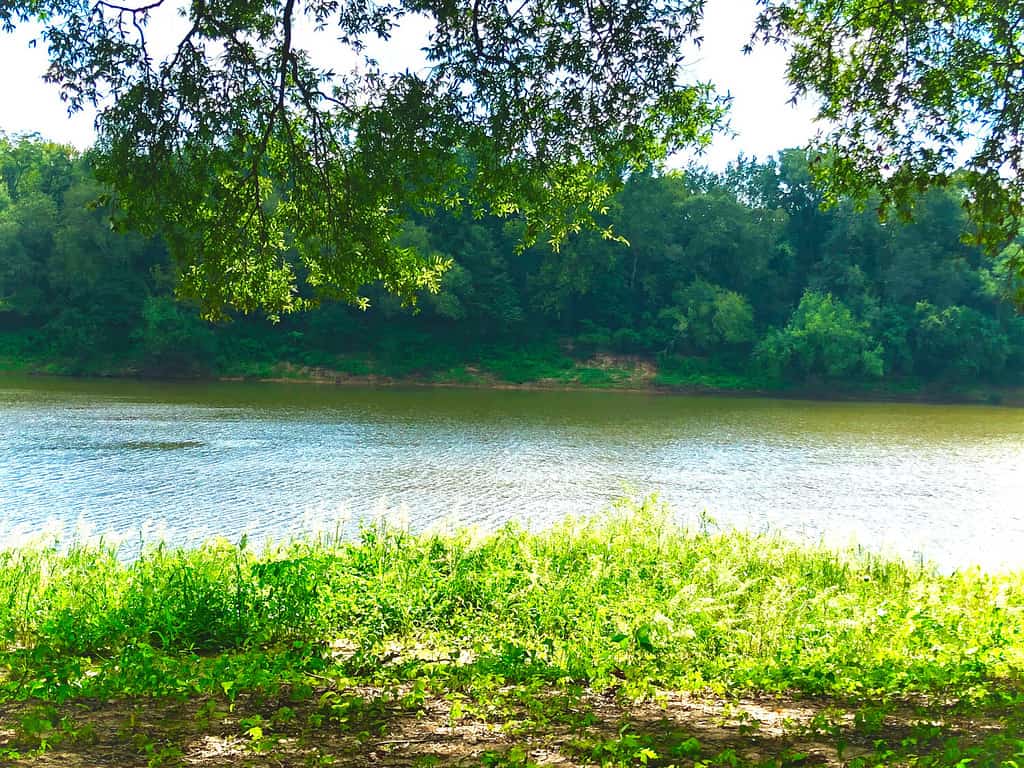
Black River-Ouachita River ranks as the 25
thlongest river in the United States.
©Joshuad01/Shutterstock.com
The start of the Ouachita is found in Arkansas’s Polk County. The southern-flowing river then moves through Jonesville (LA), meeting with Little River and Tensas. This convergence creates the Black River, which flows into the Red River in Jonesville. To navigate these waters, authorities established the Ouachita-Black Rivers Navigation Project in 1902, designing a waterway with 337 miles to travel.
Water Quality of the Black River-Ouachita River
One of the biggest complaints about this river is its high mercury content. Since the fish in certain sections absorb so much into their body, sourcing food from the river puts locals at risk. Local health officials even released a public statement in 2022, urging consumers not to eat more than 2 meals using fish from the river for their safety.
Swimming in a mercury-rich river isn’t a problem for anyone who wants to swim. Regardless of the recreational activity, there’s no danger to humans who want to swim in the area. Many sources show that – apart from the mercury – the waters of this river offer excellent swimming, fishing, and boating opportunities.
Fish and Animals of the Black River-Ouachita River
Tons of wildlife live along the banks of the Black River-Ouachita River. Some areas are abundant with deer, turkeys, and bears, though these areas rarely see humans. As the local governments maintain their conservation efforts, alligators and bald eagles now inhabit more of the area. The plethora of fish in the Black River’s waters makes it a prime spot to catch something for dinner in moderation. Stay on alert for one of the local predators like alligators or bald eagles.
Largemouth Bass
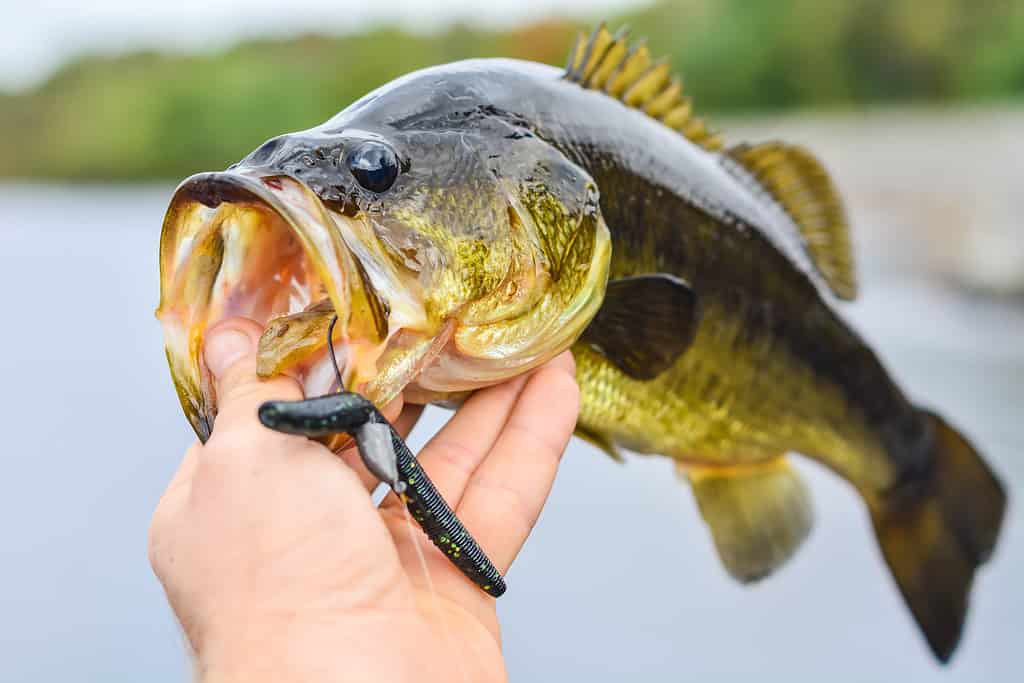
If you want to take a break from swimming in the river, many fishing spots along its path offer tons of largemouth bass.
©michal dziekonski/iStock / Getty Images Plus via Getty Images
One of the most abundant fish in the river is the largemouth bass. Typically ranging from an olive-green hue to greenish gray, their dark blotches along their back make them easy to identify. No other bass gets as big as this catch, reaching up to 29.5 inches in length. According to current records, the heaviest one was just over 25 lbs.
The easiest place to spot these bass in the river is to look for the most vegetation along the riverbanks. They tend to be closer to lakes, sheltering them; they need to live up to 16 years. Their diet is primarily made up of other fish, and they have no aggression towards humans. Even if you swim by one, these fish are more concerned with their preferred diet.
Walleye
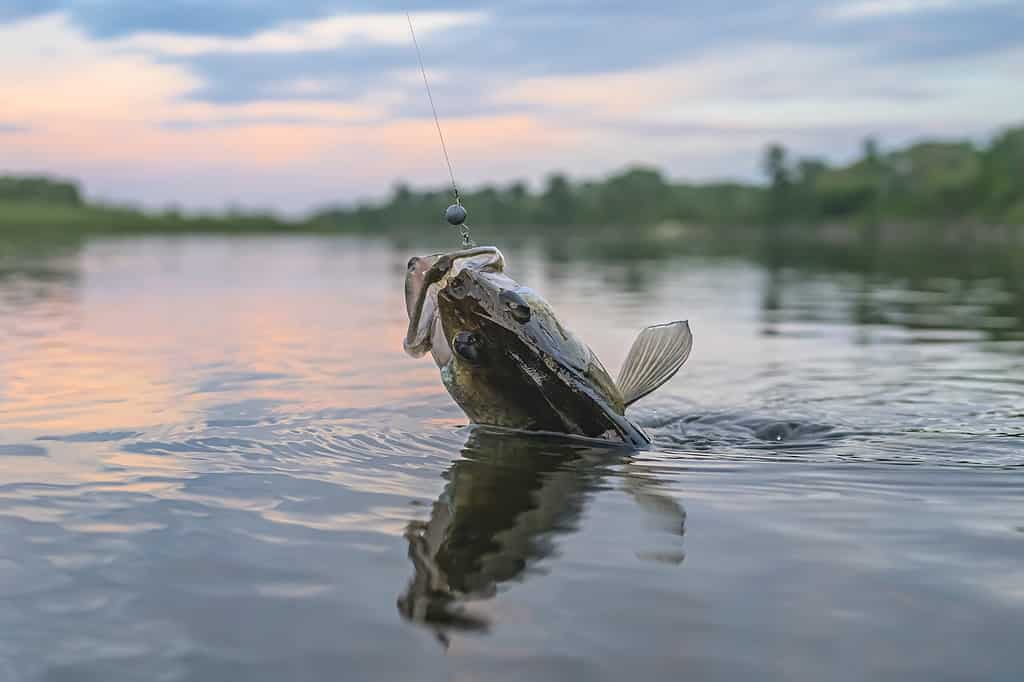
Despite the river’s abundance of walleye fish, they pose no threat to humans.
©iStock.com/FedBul
The darkness of the Black River makes it the perfect spot for walleye fish. These fish prefer darker water areas, swimming beneath the shade as protection from the bright sun. They prefer only to feed when these needs are met, so anyone who wants to fish for them will need the right timing. Plus, since they only like to be out when it’s sunny, any swimmer won’t see much of them.
Sometimes called yellow pike or yellow pickerel, this freshwater fish is more commonly seen in northern states. The species varies in appearance in different bodies of water, but the Black River offers the right ambiance.
Western Ribbon Snakes
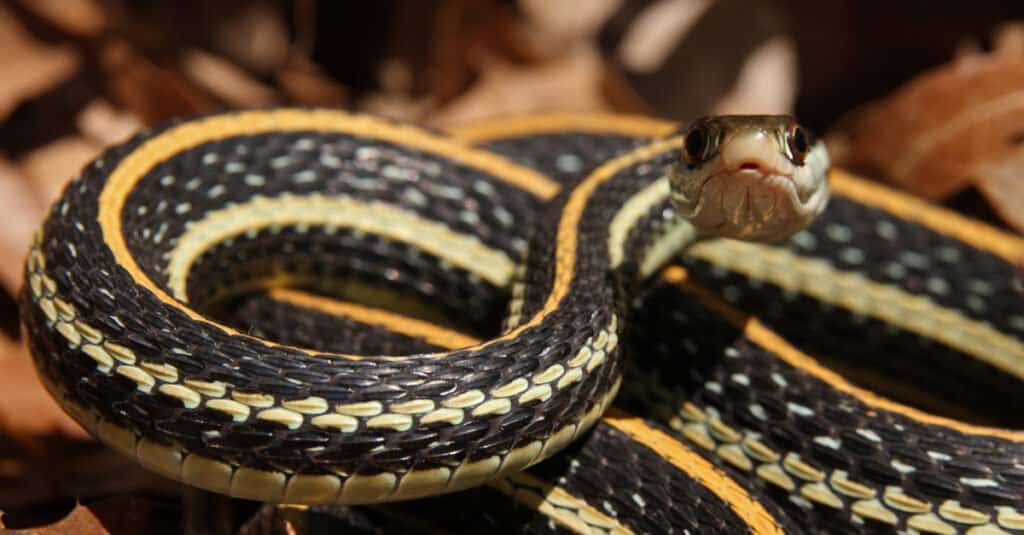
Even with the darkness of the Black River, the bright stripes along the western ribbon snake’s back make them easy to identify.
©Ryan M. Bolton/Shutterstock.com
Louisiana’s rivers have tons of small fish and tadpoles, which is why the western ribbon snake loves it. This snake is one of the most common in the Black River-Ouachita River, focusing on the aquatic wildlife for their meals. It is a type of garter snake, living natively in the United States, Mexico, and Central America.
With a slender black or brown body, these snakes reach up to 42 inches long. While these snakes seem fairly safe without any venom, their bodies are toxic to predators. Still, the strong bite of the western ribbon snake should be enough for anyone to keep their distance.
American Alligator
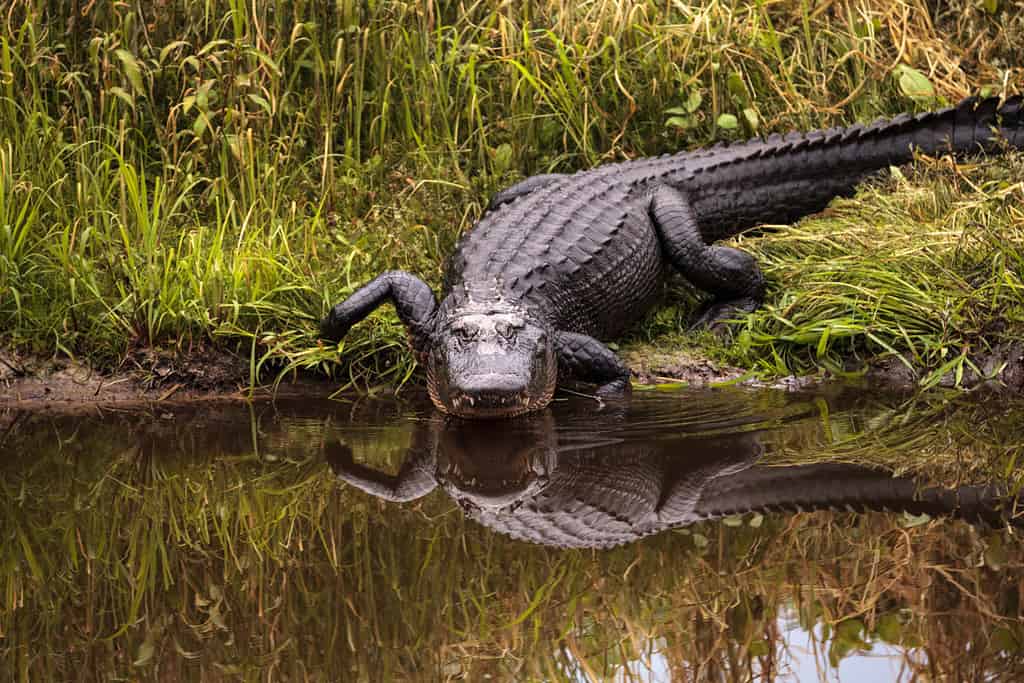
The American alligator lives anywhere they can get water in Louisiana, including ponds, lakes, rivers, and swamps. However, they don’t live along coastal marshes.
©SunflowerMomma/Shutterstock.com
Within Louisiana’s borders, the Department of Wildlife and Fisheries estimates that the American alligator‘s population is 2 million. With numbers this high, it should be no surprise that they began repopulating the riverbanks recently as the environment improved. This reptile is the largest alligator species in North America, and they’ve been around for millions of years. While males weigh almost 1,000 pounds at 13 feet long, females usually reach 9 feet in length at 400+ lbs.
While local hunting laws allow locals to hunt the alligator, the steady population along the riverbanks makes them a big threat. No one wants to be in the wrong place at the wrong time, and the tannin-rich waters of the Black River conceal them well. Scan the area for any possible alligators before entering the water.
White-Tailed Deer

The white-tailed deer is one of the most common mammals in the United States. With lush plant life along the river, they easily thrive with each generation.
©Jeramey Lende/Shutterstock.com
Many of the local white-tailed deer make an appearance along the river. In Louisiana, researchers show that there are almost 1 million white-tailed deer. Also known as the Virginia deer, this species forages in the nearby forests along the river to get their nutrients.
Since this deer sometimes acts as an opportunistic eater, their diet isn’t exclusively herbivorous. They sometimes eat small mice, songbirds, and similar small animals. Humans aren’t on the menu but are incredibly dangerous because of other inherent behaviors. They don’t directly go after humans unless provoked, but most of their dangers come from the many collisions they end up in each year.
Alternative Swimming Areas In Arkansas and Louisiana
If the dangers in this river are too much for your next adventure, Arkansas and Louisiana have several areas to enjoy. Here are a few safe rivers and other bodies of water in the southern states that welcome swimmers.
- Bogue Chitto River (Franklinton, LA)
- Mulberry River (Ozark, AR)
- Buffalo National River (AR)
- Kisatchie Bayou (Natchitoches, LA)
- Silver Creek (Mount Hernon, LA)
If you truly want to be safe, the Amite River is the river to stay away from. While many people use the river to boat and fish, the substantial debris through the decades makes it hard to navigate. Many people have already lost their lives as a result of this treacherous path. Luckily, the Black River-Ouachita River is much safer.
Is It Safe to Swim in the Black River-Ouachita River?
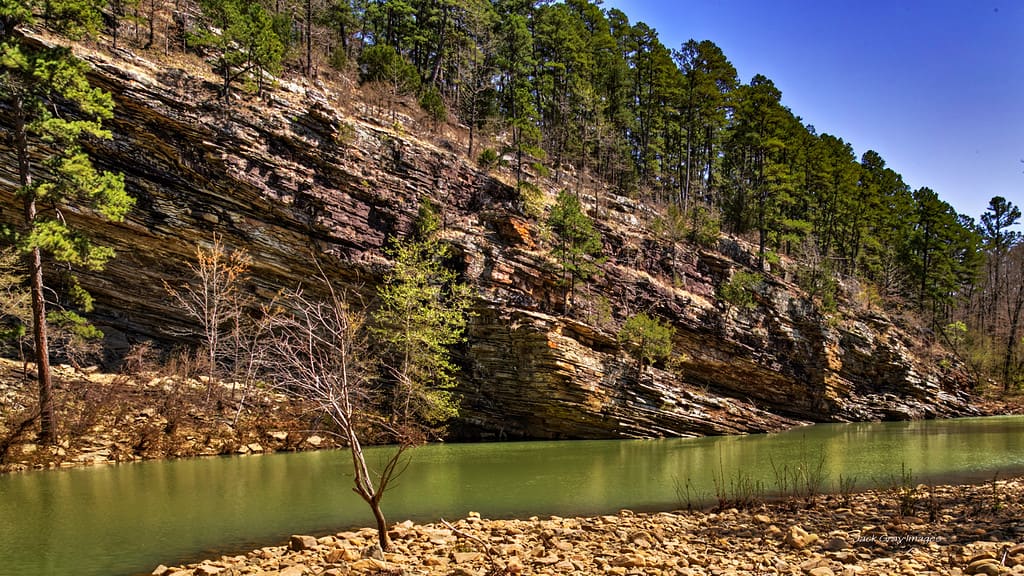
The recreational activities at this river are boundless, offering ample swimming and fishing areas.
©Jack Gray / CC BY 2.0 – License
For the most part, the Black River-Ouachita River is safe for swimmers. The river is constantly used for recreational activities, though it is up to the people who visit to make sure that they take proper safety measures. Like any public lake, no lifeguard is available, and it is up to you to decide what is right for your abilities and health risks.
The photo featured at the top of this post is © Robert Nunnally / CC BY 2.0 – License / Original
Thank you for reading! Have some feedback for us? Contact the AZ Animals editorial team.







